Parking Guidance Camera System
Introducing our parking guidance camera. The device is part of the MultiScan parking management environment. Note that it is an embedded device and not an integrated second system which is the industry standard.
Why have an embedded PGS camera?
Having integrated multiple third party parking guidance systems for clients we found that the APIs and interfaces being offered had real limitations. The data was often incomplete and generally not in real time. This mean that some of the features our clients wanted, such as nesting staff parkers, worked haphazardly if at all. Secondly, the client ended up with two sources of data that were hard to reconcile. Finally we could see that there were some amazing features we could unlock from the parking system with extra cameras. It became obvious that the sensor needed to be a part of the parking system.
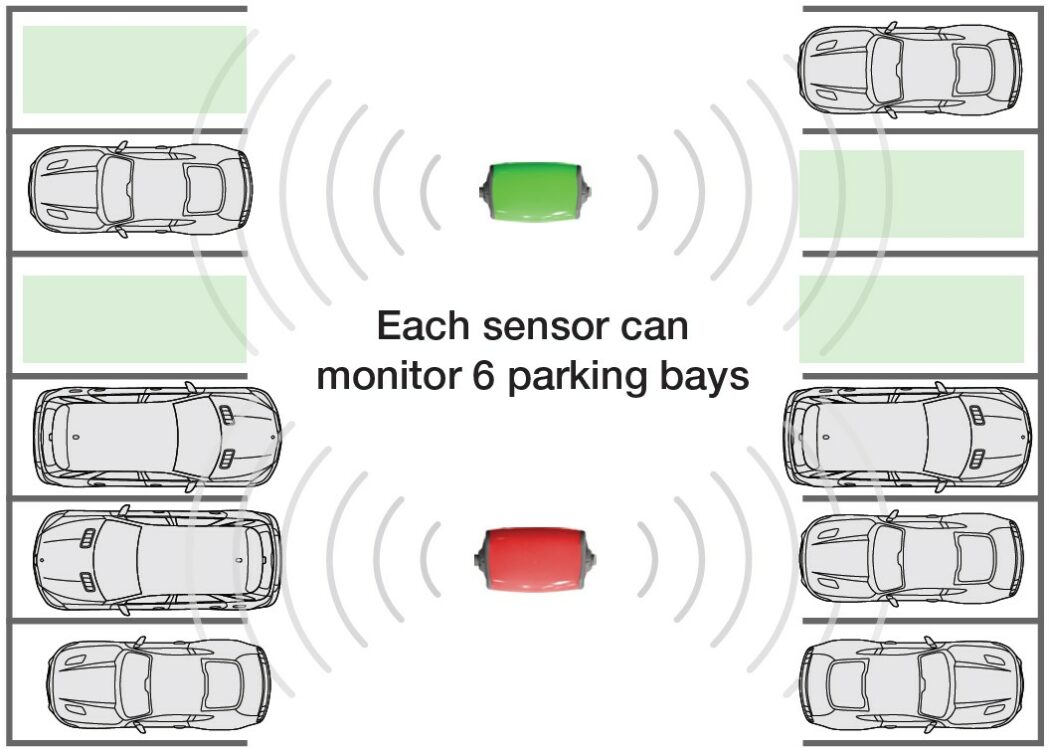
About the Sensor
The sensor is specifically designed for the parking environment. The sensor is IP65 rated to withstand ingress or dirt and water that could cause the camera to fail.
Each unit has one or two cameras. Each camera can monitor the occupancy of 3 parking spaces. So each device can monitor the occupancy of up to 6 parking spaces.
The unit has 3MP colour cameras onboard. The cameras provide high quality colour images of the vehicle and their surroundings.
The sensor includes RGB LEDs as space availability indicators. RGB means the light can be set to virtually any colour.
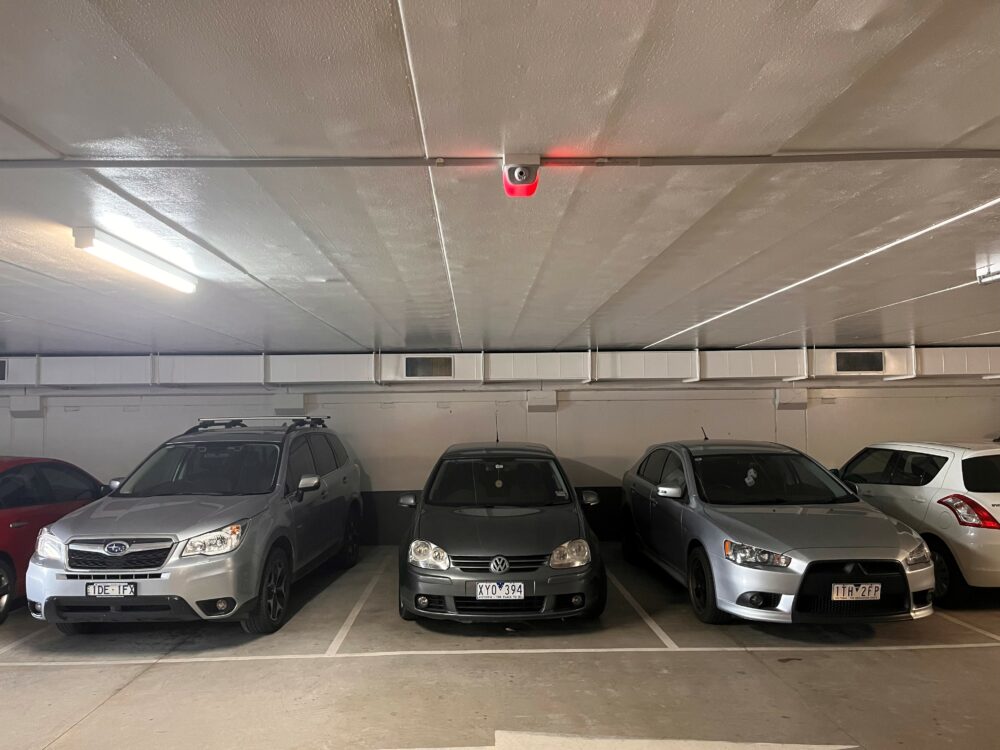
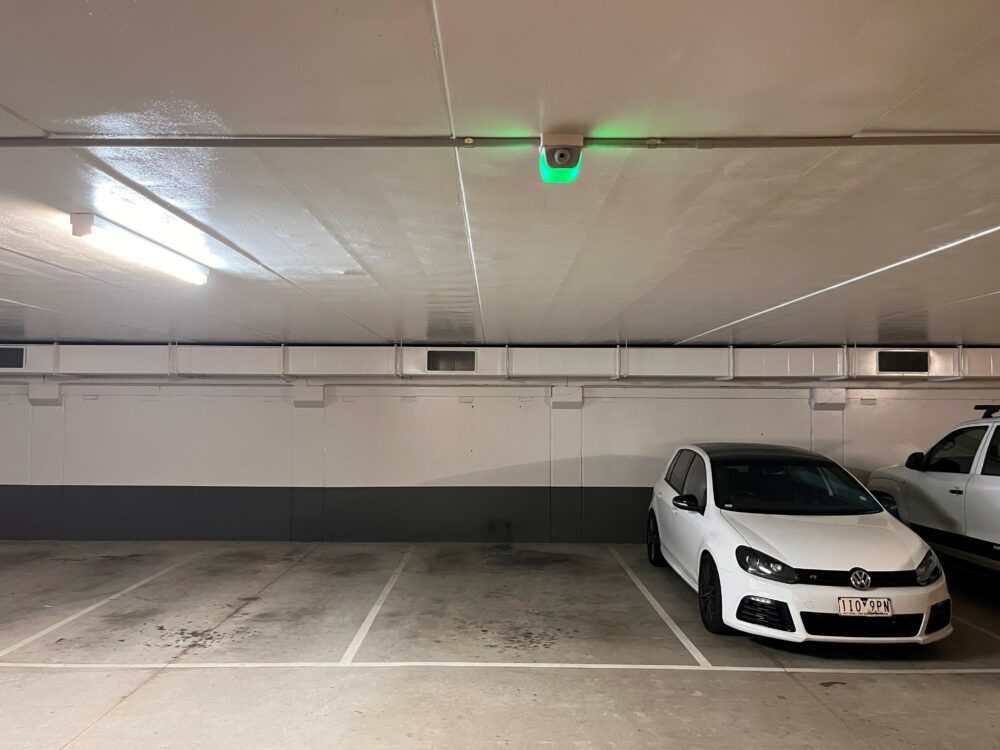
Vehicle Identification
A key ability of the sensor is to uniquely identify vehicles in the car park. This includes using License Plate Recognition (LPR) to read the license plate of the vehicle when they park.
- Car finder
- Nesting
- zone based pricing
- EV
- Monitor and alert for misuse of spaces
- Conditional and demand based pricing
- Data – tracking the transactions from start to finish – time of entry, time to park, time to exit space, time to exit property.
Vehicle Identification
A key option for the camera is to uniquely identify vehicles in the car park. This includes using License Plate Recognition (LPR) to read the license plate of the vehicle when they park. This allows the system to uniquely identify and track vehicle movements and parking activity and to report on each vehicle.
The operator will be able to search for a vehicle using a partial license plate search. This can be used by customer service to help a customer find a lost vehicle. It can also be used by management to search for specific vehicles, or how regularly a vehicle is in the car park and where they park.
When used with the parking system, it allows for virtual nesting and/or zone based pricing. For example, a camera can monitor the EV spaces and charge a surcharge for parking there. Or a camera could monitor an Accessibility space and allow for extra free time for vehicles parking there. Staff can be allowed to park in a certain area for a discount price, but of they park in the prime spaces they pay full prices.
The system can be set up to provide alerts for misuse. Each space can have a watchlist of certain vehicles that are allowed, or not allowed, in certain spaces. For example, a reserved space can have a list of dedicated allowed vehicles and if a different vehicle parks there an alert is sent to the operator.
The system can include conditional and demand based pricing. As the occupancy increases so can the pricing. Or EarlyBird rates only apply in certain locations at certain times.
Never before have operators and owners had such powerful and granular control over the parking space in the parking system.
Powerful data
Unlike standard parking guidance and parking system combinations, the Sensor Dynamics system is all in one. When the parking sensor is combined with the multiScan ticketless parking system, you can track the entire transaction of the customer.
- Time and location of entry
- time to find a space,
- Time and location parked
- Dwell time
- Time of exit from space
- If they park in a different space
- Time to get from the space to the exit
- Time and location of exit
The system will also provide data on return vehicles. This will allow you to track which vehicles are visiting the most often, for how long and where they are parking. This makes it easy to track misuse of the parking by staff.
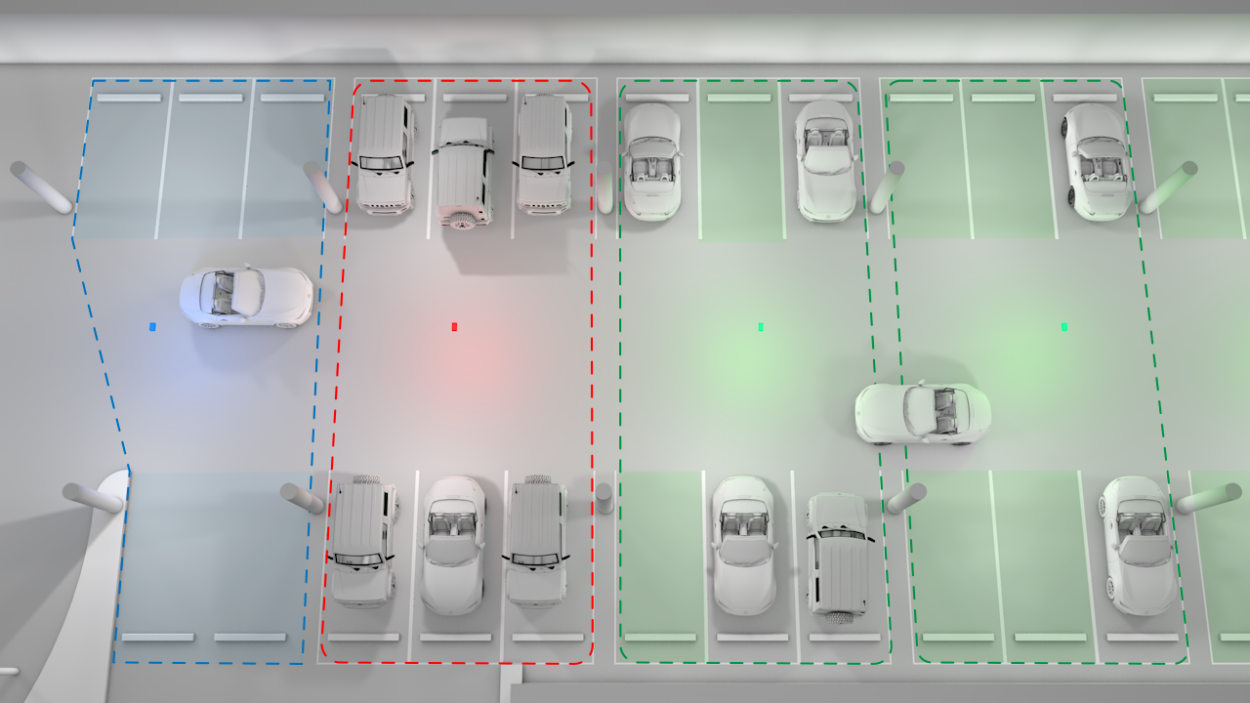
Management system
The cameras are connected via the network to our Cloud based LPRnet solution. LPRnet is a single source of truth for your whole parking solution. LPRnet includes our Ticketless parking system (multiScan).
LPRnet allows for live viewing of all data from the system including occupancy. LPRnet has live search features to allow searching of specific vehicles as well as alerts and alarms for vehicles of interest.
LPRnet includes a full suite of reporting that includes:
- occupancy
- dwell time
- turnover
- frequency
- time to bay or time to exit – total transaction time
- etc
Uniquely, the sensors are part of the parking system eco-system. They are not a separate system. The statistical data of the parking guidance cameras is reportable in the parking system. No awkward integration is required up front, or reconciliation and data massaging for reports.
LPRnet is provided as a service. No need to worry about expensive future software upgrades. The software is patched and upgraded so its always up to date and with the highest level of accuracy.
Installation
A key feature of the availability camera is that it is very easy to install. The sensor can be mounted directly to the ceiling, on a telescopic dropper or on a rail.
The cameras utilise industry standard ethernet data and POE power over a single CAT6 cable. One cable is daisy chained from sensor to sensor. The cable runs back to an off the shelf POE switch.
The electronic signs are normally hung from the ceiling on thread rod or other dropper. The signs are connected to the system using ethernet data over CAT6 cabling. The signs require 240v power.
No special tools are required or custom components.
The ease and simplicity of installation ensures the system can be installed quickly and cost effectively.
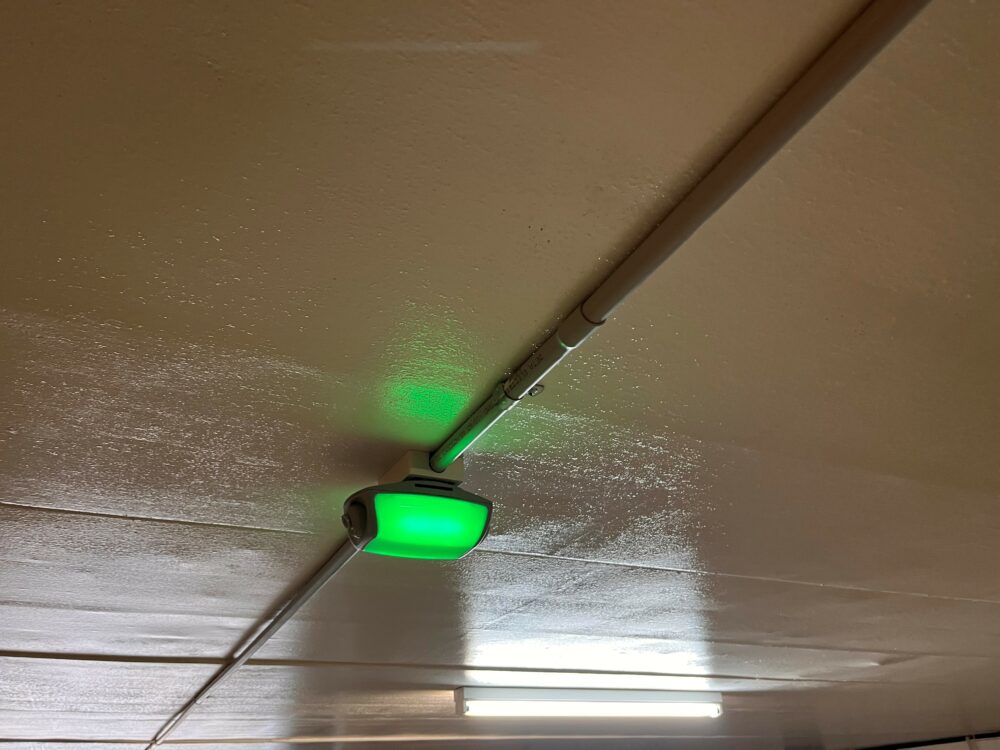
Typical installation with the sensor mounted directly to the ceiling.
Signage
Electronic matrix signs are deployed at the car park entry and also at key decision points throughout the site to help quickly guide drivers to the available parking spaces.
The signs are P3 matrix signs, meaning they can display icons, pictures and numbers. They can display icons for special user groups such as:
- Wheelchair – for accessibility spaces
- EV – for electric vehicle charging spaces
- Pram – for parents
- Etc
The signs are multicoloured. This allows for different colours for different user groups. Or different colours for the status, such as green for availability and red for full.
The sign panels are modular and expandable to suit the amount of data required on each display. The standard display size is 192mm high x 1056mm long.
The electronic panels can be matched to custom manufactured static signage panels. The static signage can be used to display wayfinding and other information, such as “exit to” or “best for” information.
Our experienced team can analyse your parking and work with you to create a signage package that best suits your site.


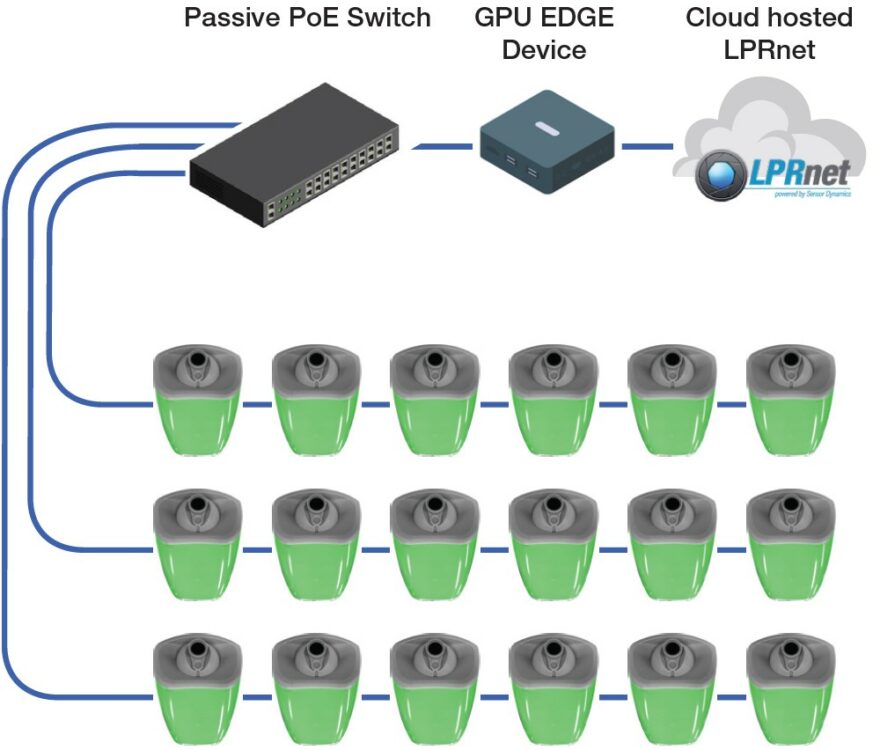
Network
The diagram provides an overview of the basic system schematic. The system is part of our LPRnet solution. The software is provided as a service and is hosted in Australia.
The sensors are connected by a single CAT6 cable in a daisy chain. The sensors are POE powered and standard ethernet for data.
The sensors can be mounted on a rail or using a telescopic dropper. The simple system architecture and daisy chain topography makes the system quick and easy to install, and also to maintain and service. This makes Sensor Dynamics space detection the most cost effective solution on the market.